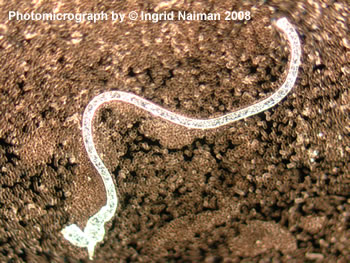Having a Seizure |
m | |||||
Posted to Subscribers on 4 May 2008 |
||||||
While I plan to write many more books before I die, I do not plan to write one on parasites. Consider that the material I am posting to the web is a gauntlet to have a look and review all sorts of thought patterns based on mantras such as "the blood is sterile" — or if you move in more professional circles — that what I see are artifacts. It is utterly amazing to me that people who have never seen a darkfield microscope can confidently pronounce judgment over what can be seen. It is true that electron microscopes generate artifacts, however, when proper methods are employed, this is not true of darkfield microscopy. First Microscopic View of a Blood Parasite I saw my first blood parasite in Santa Fe which means it was perhaps 8-10 years ago. To escape mercury vapors in his office, a dentist was seeing his microscopy patients at my home. I was always looking over his shoulder because I had been fascinated by this microscope ever since first hearing about Royal Rife sometime back in the 70s. I saw my first up close and real scope in Copenhagen at a conference when I was awarded an honorary doctorate (of medicine). That was about twenty years ago. However, for years even before this, patients had been bringing me video footage of their darkfield sessions. The Flash Photomicrographs The pictures used in the flash presentation were stills. There is a reason for this and that is that we planned to present the pictures to audiences where we needed very high resolution if we were going to project on large screens. The original files are some of them as much as 35 MB. These enormous files were compressed to very small jpgs for use in the flash. You cannot see nearly as much in the small pictures. Moreover, you can't see movement so you can take my word for it or stick your fingers through the holes in the presentations. I expect the world is full of doubting Thomases.
Parasite Reproduction When I showed some of my photos to Enderlein microscopists in Europe, they pointed to one and said "liver cancer." I said, "I think it's just a parasite egg." They were surprised and said, "perhaps you are right." Yes, but if those eggs hatch in the liver, the liver is going to be quite a nightmare for some time. Copyright by Ingrid Naiman 2008
The End of All Diseases || How We Observe || Photomicrography
|
||||||
Home || Contact Us |
||||||
No content on any of the pages of this web site may be reproduced without written permission of Ingrid Naiman and Seventh Ray Press, publisher of this site. |
||||||
|
||||||


